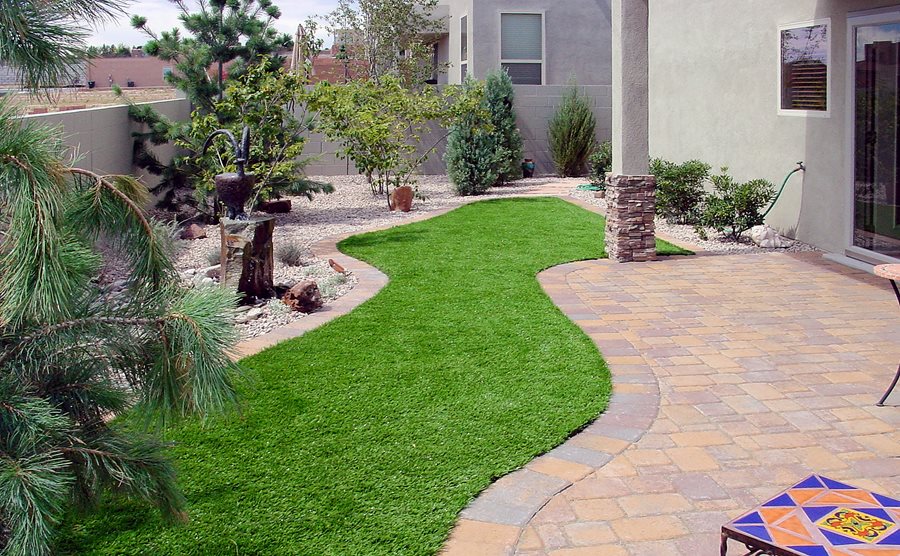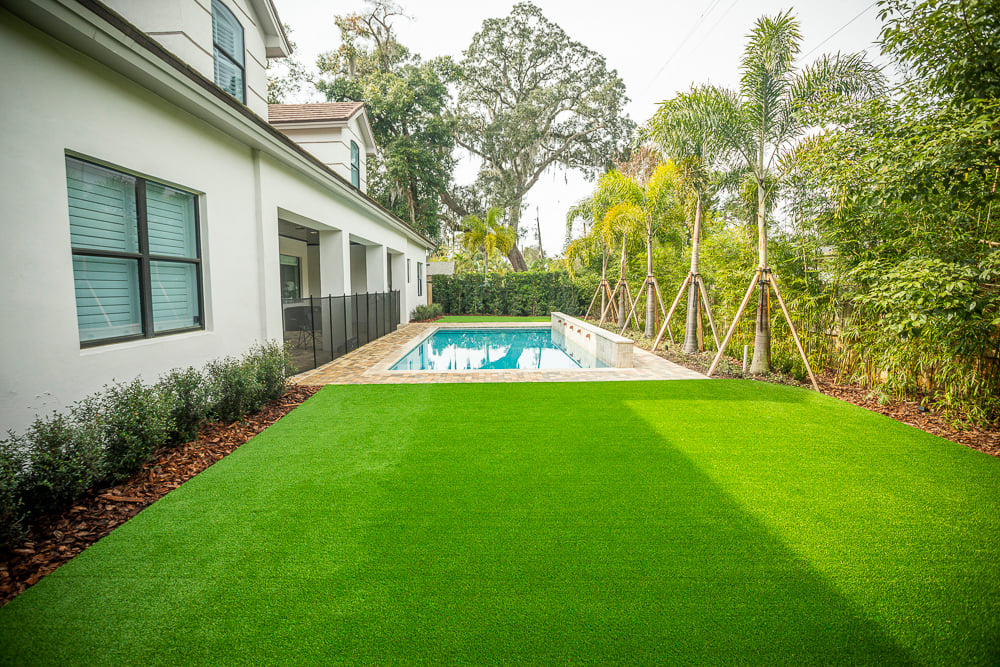See Why Homeowners Prefer Artificial Grass for Lasting Landscape Design Practices
As house owners progressively prioritize sustainability in landscape design, synthetic grass has become an engaging choice to conventional lawn. Its capability to save water, decrease maintenance initiatives, and decrease ecological impact placements it as a functional selection for those seeking environment-friendly remedies. The visual charm and convenience of artificial lawn provide to varied design preferences. Nonetheless, the effects of this change expand beyond mere benefit and looks, triggering a closer examination of how these choices affect broader environmental results. What remains to be explored is the complete extent of advantages that synthetic grass can use to property owners and the atmosphere alike.
Water Conservation Benefits
One of the most significant benefits of artificial grass is its role in water conservation. In comparison, synthetic grass eliminates this demand entirely, as it does not call for irrigation.
In addition, the setup of synthetic grass can add to a more sustainable landscape. House owners can significantly decrease their water expenses, enabling reallocation of sources to various other environmental efforts or household uses. Additionally, synthetic grass is developed to stand up to different climatic conditions without the requirement for extra watering, making it an excellent choice for areas dealing with water scarcity.
The ecological benefits extend past prompt water financial savings. By reducing water intake, man-made turf aids to mitigate the impacts of climate change, protecting important ecological communities that are threatened by extreme water extraction. As sustainable landscape design techniques gain traction, synthetic grass emerges as a responsible choice for home owners seeking to produce green exterior areas.
Lowered Maintenance Initiatives
Synthetic grass dramatically reduces upkeep initiatives contrasted to traditional turf lawns. With man-made yard, property owners can remove the lengthy tasks connected with all-natural landscaping, such as mowing, feeding, and weeding. This not just saves beneficial time but also decreases physical labor, making lawn treatment available for people of all ages.
Among one of the most noteworthy advantages is the lack of normal mowing. Typical grass require regular cutting to keep a cosmetically pleasing height, whereas artificial lawn stays regularly rich without the demand for reducing. In addition, property owners no longer need to use pesticides or plant foods, which are typically required to maintain all-natural turf healthy and balanced. This shift not just lightens the work but also promotes a neater, much more consistent appearance year-round.
Additionally, synthetic grass is resilient and resistant, requiring minimal maintenance beyond periodic cleaning and rinsing to eliminate debris. This ease of maintenance enables home owners to enjoy their exterior spaces without the constant concern of maintenance, offering even more time for recreation and family activities. Eventually, the decreased maintenance initiatives connected with synthetic grass make it an enticing option for those seeking a low-maintenance, visually appealing landscape.

Environmental Impact Reduction
There is an expanding recognition of the environmental benefits related to fabricated grass, particularly in regards to water conservation and lowered chemical use. Traditional grass need significant quantities of water, especially in drought-prone regions, leading to enhanced pressure on neighborhood water resources. On the other hand, synthetic grass removes the requirement for irrigation, considerably lowering water intake and promoting sustainability.
Furthermore, conventional lawn upkeep often involves the application of herbicides, plant foods, and pesticides, which can add to dirt and water air pollution. Synthetic grass mitigates this ecological risk by requiring marginal upkeep and practically getting rid of the demand for dangerous chemicals. This not just improves dirt health yet also secures regional ecological communities from poisonous overflow.
Moreover, the production of all-natural lawn lawns usually entails making use of nonrenewable fuel sources for mowing and landscaping devices, additional contributing to greenhouse gas emissions. By choosing fabricated turf, home owners can substantially decrease their carbon impact linked with lawn care tasks.
Visual Allure and Flexibility
Along with its ecological advantages, synthetic grass supplies significant visual charm and adaptability for landscape design. Homeowners can achieve a rich, environment-friendly appearance year-round, eliminating the seasonal changes frequently connected with all-natural grass. This consistent aesthetic not just enhances the visual charm of a property however also adds to a well-maintained and refined appearance.
In addition, fabricated turf is available in a variety of colors, appearances, and styles, permitting customization to match individual preferences and style motifs - Arizona artificial turf. Whether utilized in residential yards, commercial areas, or leisure locations, it can seamlessly integrate into diverse landscape design layouts, from contemporary minimal to rich exotic setups
The versatility of synthetic grass expands beyond plain look; it can be mounted in various areas, consisting of rooftops, outdoor patios, and even indoor rooms, producing opportunities for special landscape design services. learn the facts here now In addition, it is ideal for a series of tasks, from children's play locations to pet-friendly environments, offering capability without endangering style.
Ultimately, the aesthetic appeal and convenience of synthetic grass make it an eye-catching alternative for property owners looking for sustainable landscaping solutions that do not compromise elegance for ecological responsibility.

Long-Term Expense Savings
One of the most engaging advantages of artificial turf is its possibility for long-lasting expense financial savings. Unlike natural yard, which calls for regular maintenance-- including mowing, watering, fertilizing, and pest control-- synthetic turf significantly minimizes these ongoing costs.
Additionally, synthetic grass has a life-span of 15 to 25 years, relying on its top quality and usage. This toughness reduces substitute costs, making it a much more cost-effective selection Homepage over time. Moreover, the initial investment in man-made turf can usually be recouped through the financial savings built up in time.
While the upfront cost may appear higher contrasted to sod installment, the collective financial savings from lowered maintenance and water usage usually outweigh these preliminary expenses. Eventually, the fostering of synthetic grass not just promotes a sustainable landscape design solution but additionally uses home owners an economically smart option that lines up with long-lasting budgeting objectives.
Final Thought
Synthetic grass arises as a compelling alternative for sustainable landscape design, using considerable benefits in water conservation, reduced maintenance initiatives, and reduced ecological influence. As communities progressively prioritize eco friendly i loved this techniques, the adoption of fabricated turf represents a dynamic step toward attaining durable and lasting landscapes.
Furthermore, synthetic turf is designed to stand up to numerous weather conditions without the need for additional watering, making it an ideal selection for areas dealing with water scarcity. (Phoenix turf companies)

Artificial lawn emerges as an engaging option for sustainable landscape design, supplying substantial benefits in water conservation, lowered upkeep efforts, and diminished environmental effect.